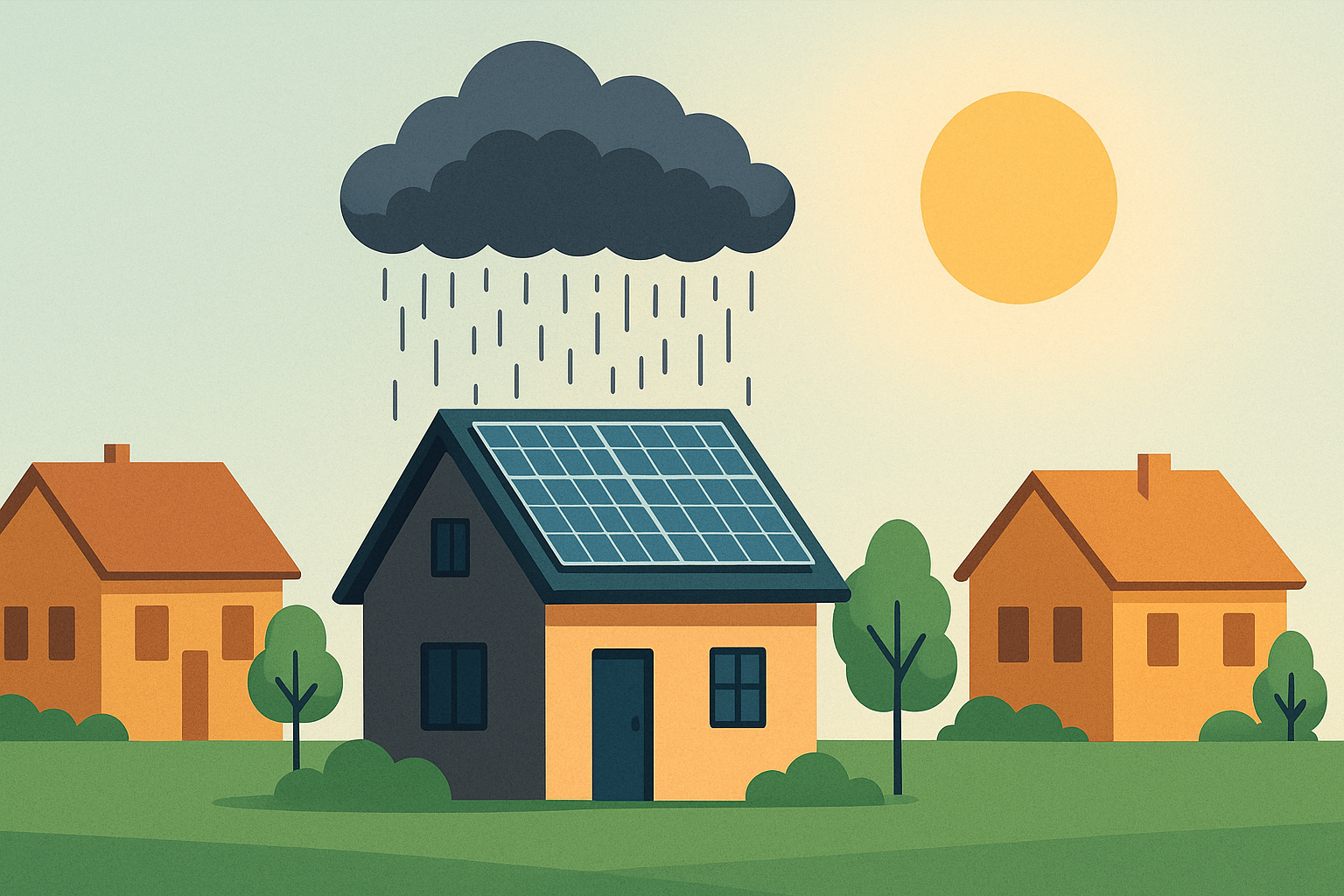(Why It’s More Complicated Than It Looks — and How to Read It Like a Pro)
Most of us glance at our electricity bill, see the total, sigh, and pay it. But hidden in those lines and columns is a detailed story of how you use — and pay for — electricity. Understanding that story can therefore help you save money, plan smarter, and, if you also have solar panels and a battery, maximize the value of every kilowatt-hour you produce and store. With the right insights, you can shift usage, charge your battery when electricity is cheap, and use it when prices are high — keeping more money in your pocket.
1. The Three Parts of Your Electricity Bill
In Sweden, your electricity costs are split into three categories — even though many people think of it as just “one bill.”
- Network fees – charged by the grid owner (in our case, E.ON) for physically delivering electricity to your home.
- Electricity cost – charged by the electricity supplier you choose (we use Tibber) for the actual energy you consume.
- Taxes and VAT – government charges that apply to both the energy and the network fees.
Here’s something many people don’t realize until they start looking closer:
You often don’t actually get one bill. Most households receive two separate invoices each month — one from the DSO (Distribution System Operator, like E.ON or Vattenfall) for the network fees, and one from the electricity supplier (like Tibber) for the energy you’ve used.
If you have solar panels and a battery, both invoices are affected:
- Lower grid usage means a smaller bill from the DSO.
- Smart use and storage can reduce your bill from the electricity supplier.
2. Network Fees — The Cost of “Access”
You cannot choose your network operator — it’s a local monopoly. They maintain the power lines, measure your consumption, and make sure electricity reaches your house.
E.ON charges us:
| Cost Item | Excl. VAT (öre/kWh) | Incl. VAT (öre/kWh) |
|---|---|---|
| Transmission Fee | 18.00 | 22.50 |
| Energy Tax | 43.90 | 54.88 |
| Total Variable Cost | ~77.38 öre/kWh | |
| Fixed Monthly Fee (20A fuse) | 480.00 SEK | 600.00 SEK |
This means that before we’ve even paid for the electricity itself, every kilowatt-hour from the grid costs about 77 öre — just in fees and tax.
Where the battery helps: Every kWh you use from your battery instead of the grid avoids these network fees completely. By storing excess solar during the day and using it in the evening, you cut down the amount of electricity that needs to travel through the network — and the charges that come with it.
3. Electricity Cost — Your Energy Supplier
This is the part of the bill where you do have a choice.
We use Tibber, which charges us the actual hourly spot price plus a small fixed fee. Their app shows our consumption in real time, and they can also control smart devices like EV chargers and heating systems to help us avoid high prices.
If you have a battery, you can take this one step further:
- Charge it when prices are low (for example, during the night in winter or midday in summer when you have solar surplus).
- Use it when prices are high (typically mornings and evenings).
This way, you’re not only making the most of your own solar power — you’re also actively buying from the grid at the cheapest possible times and avoiding expensive peaks.
4. Taxes and VAT
In Sweden, the energy tax is a fixed amount per kWh and applies regardless of your supplier.
On top of that, VAT (25%) is added to everything — network fees, electricity costs, and even the tax itself.
When you use electricity from your battery, you avoid paying both the energy tax and VAT on the portion of power you don’t take from the grid. Over a year, this adds up.
5. Why Self-Consumption (and Storage) Saves the Most
When we installed our solar panels, we first thought the biggest savings would come from selling electricity to the grid. But quite quickly we realized that the reality looked different:
The biggest savings come from using your own electricity — either directly or from your battery — instead of buying it.
Every kWh we use directly from our solar panels or battery means we avoid:
- The spot price from Tibber
- E.ON’s transmission fee
- Energy tax
- VAT on all of the above
That’s why our 16 kWh battery is such a valuable investment — it evens out the difference between the hours when the sun is shining and the hours when we actually need the energy.
6. Tips to Reduce Your Electricity Bill
To wrap things up, here are a few practical tips:
- Shift consumption to hours when your solar panels produce or when spot prices are low.
- Automate appliances with tools like Home Assistant to control both consumption and battery charging.
- Charge your EV smartly — avoid high-price hours and use excess solar or battery power.
- Use your battery strategically — don’t just store solar energy, but also charge it during low grid prices in winter.
- Track your savings — many apps clearly show how much of your electricity came from solar and battery versus the grid.
Final Thoughts
Your electricity bill is more than just a total — it’s a map of where your money goes and where you can save. By understanding each part and using your battery wisely, you can cut costs on multiple fronts: avoiding expensive peak hours, reducing network fees, and paying less in tax.
Next time you open your invoices — yes, both of them — don’t just look at the total. Dive into the details and see where your solar panels and battery can take over.

No responses yet